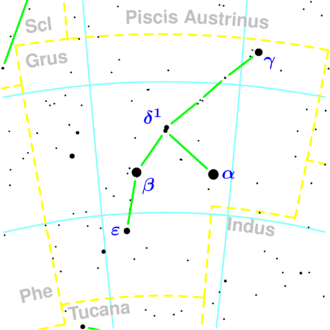NGC 7070
| Galaxy NGC 7070 |
|
|---|---|
|
|
|
| AladinLite | |
| Constellation | crane |
|
Position equinox : J2000.0 , epoch : J2000.0 |
|
| Right ascension | 21 h 30 m 25.3 s |
| declination | -43 ° 05 ′ 14 ″ |
| Appearance | |
| Morphological type | SB (s) c |
| Brightness (visual) | 12.3 mag |
| Brightness (B-band) | 12.8 mag |
| Angular expansion | 2.4 '× 1.9' |
| Position angle | 22 ° |
| Surface brightness | 13.7 mag / arcmin² |
| Physical data | |
| Affiliation | SSRS group 34 NGC 7079 group LGG 446 |
| Redshift | 0.007925 ± 0.000017 |
| Radial velocity | 2376 ± 5 km / s |
|
Stroke distance v rad / H 0 |
(106 ± 8) · 10 6 ly (32.5 ± 2.3) Mpc |
| history | |
| discovery | John Herschel |
| Discovery date | September 5, 1834 |
| Catalog names | |
| NGC 7070 • PGC 66869 • ESO 287-028 • MCG -07-44-016 • IRAS 21272-4318 • 2MASX J21302534-4305135 • SGC 212713-4318.4 • HIPASS J2130-43b • LDCE 1468 NED001 | |
NGC 7070 is a bar-spiral galaxy of the Hubble type SBc in the constellation Crane in the southern sky . It is estimated to be 106 million light years from the Milky Way and about 75,000 light years across.
In the same area of the sky is the galaxy NGC 7072 .
The object was discovered by John Herschel on September 5, 1834 .
